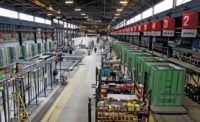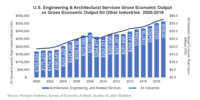• 90% of homeowners believe school buildings affect student health/productivity, and 95% believe hospital buildings and operations affect patient/staff health and productivity.
Human-resource executives also recognize the link between buildings and health, with its top emphasis on spaces that encourage social interaction. 66% of their companies consider spaces for social interaction when making leasing decisions today, and even more (75%) expect it will be considered in the future.
Yet, the architect community is not as attuned to this need, with creating spaces for social integration being eighth in a list of key factors. This gap suggests the industry needs to be more sensitive to the issue given how the millennial and subsequent generations work, learn and interact and thus, improve their productivity.
The report reflects a landmark research project that is the first to span across five key stakeholders who influence the prevalence of healthy design and construction practices in buildings, including the physicians noted above, construction industry professionals in the residential and nonresidential sectors, owner HR executives and homeowners. The breadth of the study is essential in critical gaps between stakeholder responses that are preventing the design and construction industry from fully capitalizing on the specific healthy-building investments sought by other stakeholders.
The report reveals the increasing attention industry professionals and owners are placing on health in design and construction plans—as well as some of the needs the industry has to increase these efforts.
According to the study:
• All firms are reporting increases in addressing occupant health in design and construction decisions—59% of owners, with architects leading other players in adoption of healthy practices.
• Firms that are doing more green building work are also more attuned to health issues.
• Owners need more data and greater public awareness of the health impacts of products, practices and buildings holistically in order to support additional healthy building investments. Those are reported as the top drivers at 40% and 48% of owners, respectively.
“Green buildings have real, proven health benefits including improved employee productivity, lower health care costs and reduced absenteeism,” said John Mandyck, chief sustainability officer, UTC Building & Industrial Systems. “This study shows that human-resource professionals and building owners see the benefit of investing in a healthier physical work environment — in fact, 66% of those who measured occupant well-being saw an improvement after moving to a green building.”



Post a comment to this article
Report Abusive Comment